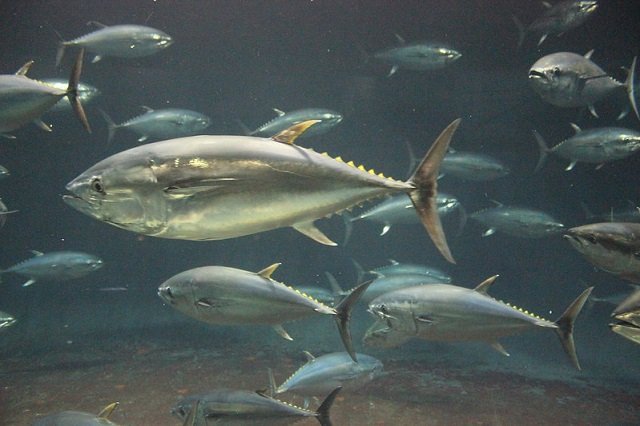France.- Since the launch of the Sentinel-2A and 2B satellite constellation by the European Space Agency, new opportunities opened for aquaculture monitoring from Space. Due to its high spatial resolution (20 m), high revisit time (5 days), and ability to sense the colour of the ocean in the visible and near-infrared, Sentinel-2 made it possible to analyse the distribution of chlorophyll concentration and turbidity – two water quality parameters influencing shellfish life cycle – at the scale of an oyster farm. This could be used to monitor water quality in farming areas, identify new sites offshore, or to assess the differences in chlorophyll concentration (a proxy of available food for shellfish) across an existing farm area, which may have implications for shellfish growth and production.
Research results from a shellfish farming case-study had been published in Frontiers in Marine Sciences* by Pierre Gernez and Laurent Barillé from the University of Nantes, in collaboration with David Doxaran from the Laboratory of Oceanography in Villefranche-sur-mer, France. The study was focused on Bourgneuf Bay, a macrotidal bay along the French Atlantic coast, widely used for shellfish aquaculture. The bay is mostly constituted of mudflats, and in this turbid environment suspended particulate matter (SPM) concentration is generally high (i.e., SPM concentration regularly exceeds 50 g m-3). As a too high SPM concentration impacts oyster clearance rate and other physiological functions, oyster growth can be negatively impacted by high SPM concentration during certain hours of the day in several areas of the bay.
Satellite remote sensing made it possible to assess when and where oysters were impacted by the high turbidity. One of the most striking results of the article by Gernez et al. was that oysters were mostly impacted by turbidity during spring tides, despite the high concentration of microalgae concurrently available for feeding. The full article is available online in open access.
This study highlights the potential of Earth Observation for aquaculture spatial planning, and offers a generic framework where the combination of high resolution ocean colour satellite remote sensing with bivalves ecophysiological model makes it possible to explore the response of cultivated suspension feeders to environmental conditions in many coastal areas. This research has been supported by the H2020 TAPAS project, which is aimed at developing tools, approaches and frameworks to support EU Member States in implementing the Strategic Guidelines for the sustainable development of European aquaculture and delivering a technology and decision framework for sustainable growth.
Reference (open):
Gernez P., Doxaran D., & Barillé L. (2017). Shellfish aquaculture from space: potential of Sentinel2 to monitor tide-driven changes in turbidity, chlorophyll concentration and oyster physiological response at the scale of an oyster farm, Frontiers Marine Sci., 4: 137, doi: 10.3389/fmars.2017.00137
http://journal.frontiersin.org/article/10.3389/fmars.2017.00137/full
More information: www.tapas-H2020.eu
Source: TAPAS
Stay Always Informed
Join our communities to instantly receive the most important news, reports, and analysis from the aquaculture industry.
Editor at the digital magazine AquaHoy. He holds a degree in Aquaculture Biology from the National University of Santa (UNS) and a Master’s degree in Science and Innovation Management from the Polytechnic University of Valencia, with postgraduate diplomas in Business Innovation and Innovation Management. He possesses extensive experience in the aquaculture and fisheries sector, having led the Fisheries Innovation Unit of the National Program for Innovation in Fisheries and Aquaculture (PNIPA). He has served as a senior consultant in technology watch, an innovation project formulator and advisor, and a lecturer at UNS. He is a member of the Peruvian College of Biologists and was recognized by the World Aquaculture Society (WAS) in 2016 for his contribution to aquaculture.




